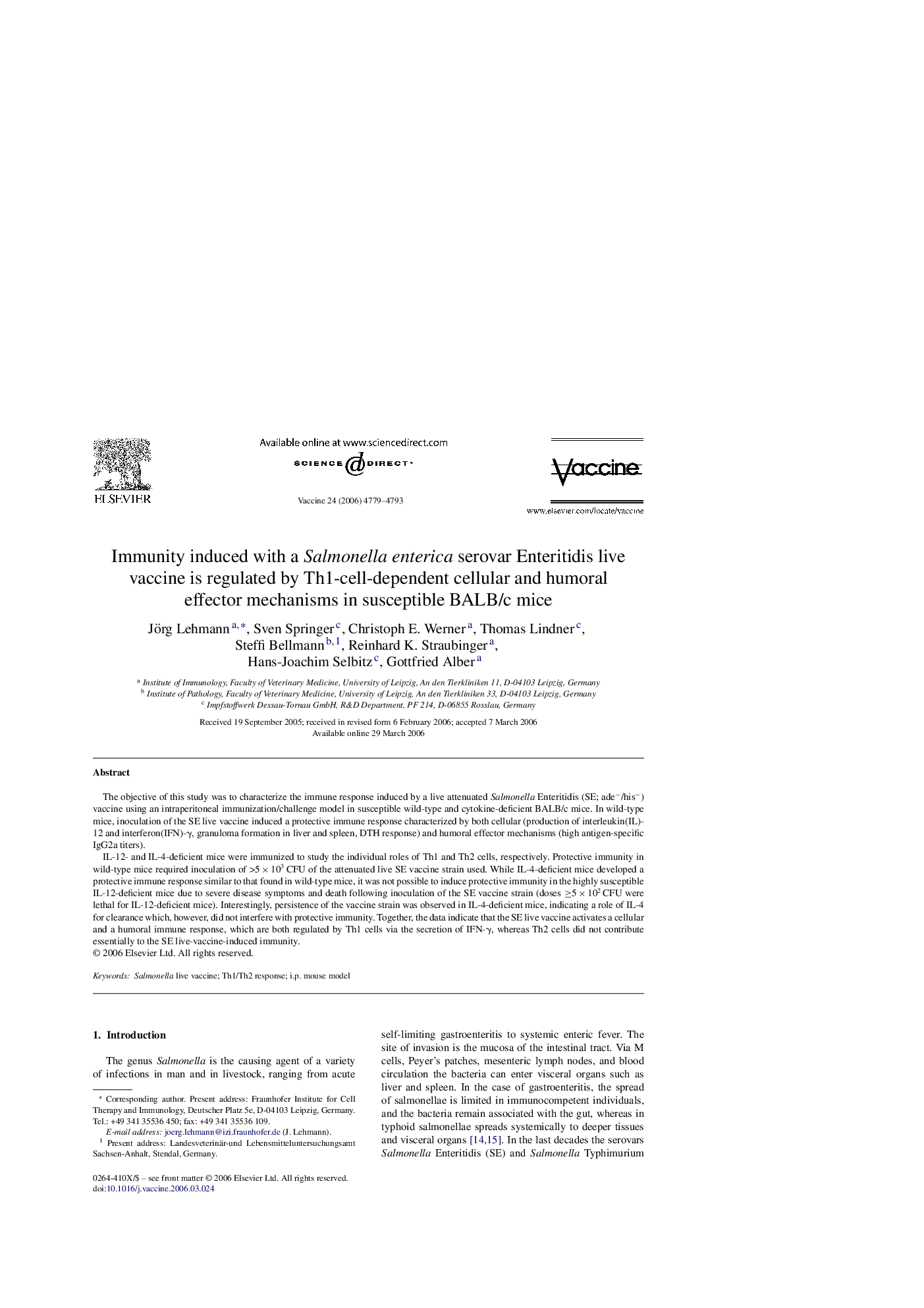| Article ID | Journal | Published Year | Pages | File Type |
|---|---|---|---|---|
| 2410102 | Vaccine | 2006 | 15 Pages |
The objective of this study was to characterize the immune response induced by a live attenuated Salmonella Enteritidis (SE; ade−/his−) vaccine using an intraperitoneal immunization/challenge model in susceptible wild-type and cytokine-deficient BALB/c mice. In wild-type mice, inoculation of the SE live vaccine induced a protective immune response characterized by both cellular (production of interleukin(IL)-12 and interferon(IFN)-γ, granuloma formation in liver and spleen, DTH response) and humoral effector mechanisms (high antigen-specific IgG2a titers).IL-12- and IL-4-deficient mice were immunized to study the individual roles of Th1 and Th2 cells, respectively. Protective immunity in wild-type mice required inoculation of >5 × 103 CFU of the attenuated live SE vaccine strain used. While IL-4-deficient mice developed a protective immune response similar to that found in wild-type mice, it was not possible to induce protective immunity in the highly susceptible IL-12-deficient mice due to severe disease symptoms and death following inoculation of the SE vaccine strain (doses ≥5 × 102 CFU were lethal for IL-12-deficient mice). Interestingly, persistence of the vaccine strain was observed in IL-4-deficient mice, indicating a role of IL-4 for clearance which, however, did not interfere with protective immunity. Together, the data indicate that the SE live vaccine activates a cellular and a humoral immune response, which are both regulated by Th1 cells via the secretion of IFN-γ, whereas Th2 cells did not contribute essentially to the SE live-vaccine-induced immunity.
